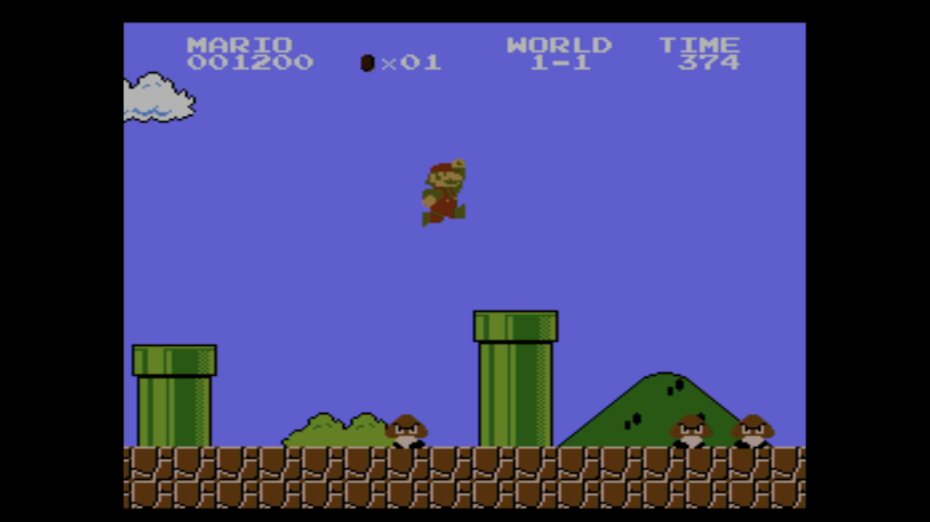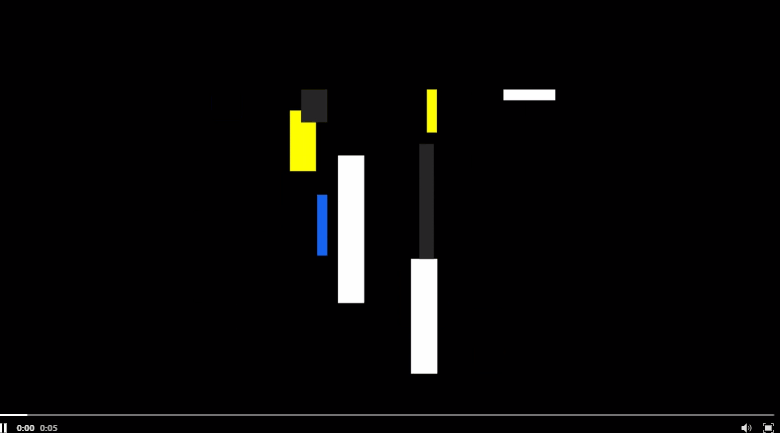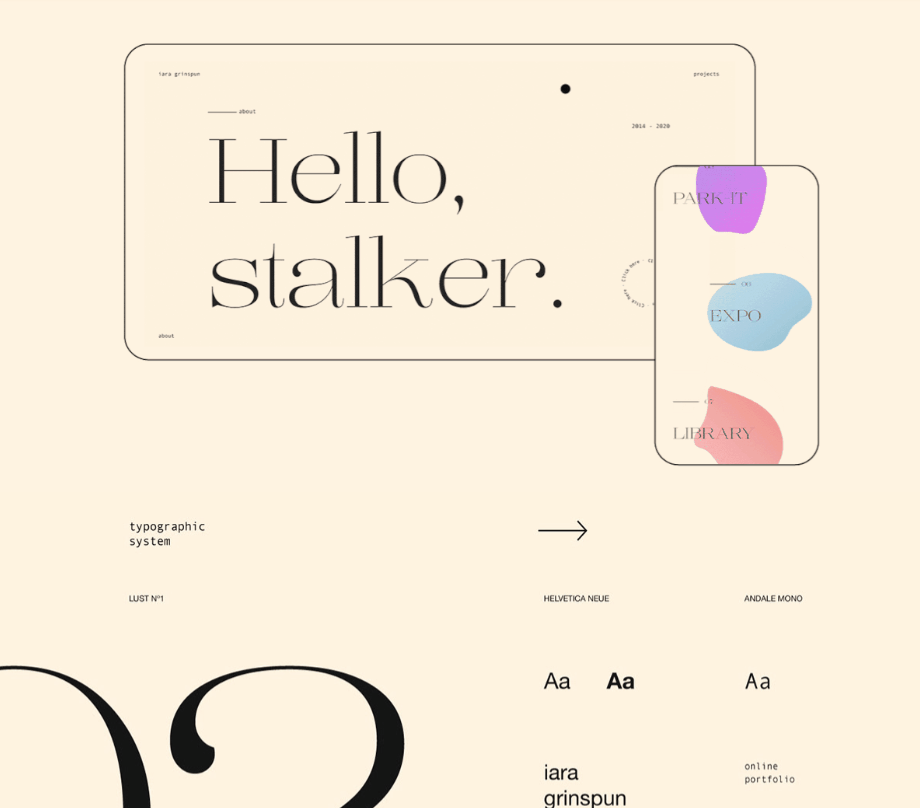Timeline Of Video Game Design
Gaming's golden age occurred between the late '70s and early '80s. Excitement, collaboration and innovation swirled around the industry like a whirlpool and this hasn't stopped. Contemporary design consistently references its infatuation with '80s video game design, which we'll explore in detail throughout this piece.

Three big names of early video game design
—
To kick things off, let's look at the golden age of gaming. There were three main players in an '80s video game landscape whose openness and creativity shaped the minds of young tech-heads all over the world.
Atari
Atari was launched in 1972. They changed the game when they introduced home console systems in 1977 and became the fastest growing company in the history of the US, controlling at least 75% of the market. Their most famous game, Space Invaders, was an arcade legend. Tomohiro Nishikado created it and by doing so, he christened gaming's golden era with the world's first Shoot 'em up subgenre of video games. Space Invaders introduced strategic gaming, repetitive graphics and glowing alien characters to the arcades, which proved so successful that it incurred an infamous coin shortage in Japan.
Nintendo Entertainment System (NES)
Nintendo enjoyed success in the arcades with the 1981 release of their arcade classic, Donkey Kong. But, in 1983, the US gaming industry shuddered into a mighty crash. Revenues were down by 97% and things looked pretty bleak for gamers.
Like every other company, Nintendo had to completely rethink their game plan. So they found a gap in the American market and went for it. Their release of the Nintendo Entertainment System, a quality home console, allowed Nintendo to emerge from the crash victorious. Heck, it saved the day for the wider gaming industry.

But for the console's big release, they needed a new star. Designers at Nintendo rebranded Jumpman, Donkey Kong's leading star, to the dungaree-clad poster boy Mario to front Super Mario Bros. Together with his brother Luigi, Mario (and Nintendo) revived the gaming industry and almost 40 years later, they're still all household names.
SEGA
While NES attracted the kiddies, SEGA made gaming cool. In successfully targeting teenagers, they were also the number one gaming choice for every 16 year old's younger sibling. Rebellious, quick-witted and heroic, Sonic the Hedgehog was a sophisticated rival to Nintendo and proved to be a company-defining moment. This mascot has gone on to influence so many aspects of wider contemporary culture that it even has a medical gene named after it .

'80s video game design: getting into graphics
—
LCD, vector and raster graphics were seen throughout '80s video game displays, with each having their own distinct aesthetic and capabilities.
LCD graphics
LCD (or liquid-crystal display) were initially seen in many handheld games, particularly Nintendo's "Game and Watch" series. This is because LCD displays hold a pre-formed set of visuals, which never overlap but represent every possible arrangement of visual data in a set game. This type of displays traditionally worked best for smaller screens and simple games in which functionality was limited because they were basically using the same technology found in digital watches.

Vector graphics
Vector graphics utilize an x,y coordinate system with games, just like with designs today. These systems made rotation and scaling easier. For example in Battlezone the scaling feature made tanks appear larger as they approach closer. Vector art paved the way for contemporary 3D graphics, inspiring ways to visualize solid objects and animation through these early commands.
Battlezone vector visuals from 1980, via Atari.
Raster graphics
Raster graphics are perhaps the most recognizable display system. A raster—or bitmap—graphic is made up of a grid-like formation of pixel squares. Each pixel is a color and when you put them together, you end up with really bright, color-rich imagery. The downside is that these gridded images are not scalable; things end up looking blocky and pixelated when you try to enlarge them.
Back in the 80s, the arcades had adopted raster graphics pretty early on. The spectrum of colors wasn't huge yet (in comparison to how big it is today) and so palettes were limited. Pac Man, Frogger and Space Invaders were some of the first major games using raster graphics. The retro, pixelated and bright aesthetic these games embodied has almost gained a cult following with it consistently—and currently—being featured across design.

A retro ripple effect
—
From color palettes, iconic characters, typography and entire aesthetic movements, ' 80s video game design permeates graphic design trends today. Perhaps one explanation of this is in the power of nostalgia marketing. A particularly emotionally-charged strategy, it taps into an audience's sense of familiarity to identify with them through past trends, positive cultural memories and famous events.
Perhaps unsurprisingly, nostalgia marketing is most effective when targeting millennials. It draws back on rose-tinted memories of "simpler", pre-internet times when individuals could sit back and enjoy an 8-bit game along with its repetitive soundtrack. To create a successful nostalgia-centric marketing campaign, you have to be timely and relevant to generate that warm, fuzzy fondness associated with the event. It's no wonder then why many brands are employing this tactic, and looking to the golden era of ' 80s video game design to help them do so.
Recognizing the design influence of '80s video games
—
Simplistic gameplay
We'll begin with the basics. Video games in the ' 80s were generally pretty simple in terms of gameplay and graphics. The technological restrictions of ' 80s operating systems, plus the fact that memory was super expensive, meant that it would be a while before any user could enjoy the incredibly intricate graphics of contemporary games like Cyberpunk 2077 or The Legend of Zelda as we know her today.

Yet, despite the massive innovations we've seen in gaming technologies, this idea of simplicity has prevailed. While the industry has segwayed to include mobile phone apps and tablets, this same kind of basic, linear gameplay is trending with the latest versions of Mario Kart, Angry Birds and Candy Crush continuing to dominate much of the industry.
Neon color palettes
Synthesized color palettes of ' 80s video games, especially in the earlier years, were characterized by their limitations. Depending on the system and the arcade evolution, graphics would be shown in black and white, grayscale or (usually) 8-bit color, which ultimately meant that palettes tended to be very limited. When in color, things got bright. So bright, it was almost offensive. Primary colors looked fluorescent; neons radiated against the black or dark blue backgrounds they were set upon.
The contrast of different neons and black created a buzz that leaked out of the arcades, across the runways and nightclubs into mainstream ' 80s culture, with which they've become intrinsically linked to. From Blade Runner to James Turrell to the pink lit decoration of your local nail salon, neons are continually referred to and celebrated across graphic design.

Dark mode
There's a reason why gaming and coding are intrinsically linked to dark mode. The use of a dark background instead of a bright white places much less strain on the eyes. It contrasts with vivid foreground colors to make it easier for the user to consume especially if the room (or arcade) you're accessing this information from is low-lit. You can see this preference for dark mode in gaming as far back as the earliest video games like Battlezone and Asteroids.
More recently, you'll notice this trend having swept across a wider scope of digital design. Many brands with a digital presence have explored the use of dark mode, partly to better the user experience of their site (or program or platform), but also because the aesthetic looks pretty cool. The color black has long been associated with themes of sophistication or elegance, it adds drama to a design and is an edgier alternative to white if you're chasing a minimalist look.
Pixel fonts
Arcade and retro video game typography is iconic. It's made up of a group of monospace fonts, sometimes referred to as pixel fonts and current designs are constantly reimagining them to tap into specific brand identities and reflect a strategy of nostalgia marketing.
What makes a font monospaced is that they're non-proportional: this means they have a fixed-width (or equal amount of horizontal space) for each and every character. During the early period of gaming (and computer technology), designers were having to adhere to an 8×8 grid when creating these fonts, which are sometimes called pixel fonts.
So called pixel fonts are a perfect product of their time, of which modern design is constantly referring to and glorifying. Pixel Operator, Sabo and Press Start 2P exemplify this continuing appreciation of retro fonts with a video game, techy feel, as they're among the countless, contemporary fonts developed every year that hark back to this period.
Glitch art graphics
Think texture, distortion and incessant flickering; glitch art glorifies technical mishaps. In reference to the golden age of video games, glitch art can appear in many forms. Grainy, fuzzy and/or often pixelated, it can be a great technique to use on static imagery but also when designing web page transitions and logo reveals.

Maximalism and interactivity
The antithesis of minimalism, maximalism is gaining popularity across digital design. Encouraging creativity, innovation and originality that isn't dominated by white space, maximalism promotes accessibility. More is more: like games, maximalism wants to immerse its audience in the details.
Interactive web design by Aristide Benoist, via Dribbble.
Interactive web design by Alternative Solutions, via Behance.
Brands are cottoning onto this shift away from static, minimalist web pages and one avenue of maximalism that's particularly relevant now, commercially, is interactive web design. This kind of feature, when implemented successfully, works wonders in creating a truly unique, memorable, smooth and positive user experience. It's still such a novelty that it can set you way above competitors. Navigation is becoming increasingly dynamic in contemporary design, yet this is nothing new in another design sector.

Interactive web design by Olga Stepanova and Alex's Creatures, via Behance.
Even typefaces can be animated. By Animography, via Behance.
Gaming has always been a brilliant introduction for those wishing to learn about user experience and interactive web design. Creating entire worlds that users could move around in with agency, many ' 80s video game designs introduced millions to exploring 3D digital effects. As technology has progressed, we've seen virtual and augmented reality rise through gaming design to begin to leak over other digital design mediums, such as ecommerce and social media platforms.
The grid
We couldn't mention ' 80s video game design without mentioning cyberpunk design . The idea of cyberspace existed before the internet did, from the release of TRON in 1982 to Shadowrun in 1989, which was actually inspired by the massively influential 1984 William Gibson novel, Neuromancer. Visually, it's often represented by a never-ending grid.

This grid has become quite the phenomenon. Neon-lit, the gridlines are often in magenta or cyan and set upon a black or dark blue backdrop, when used in contemporary design. It's linked with not only Cyperpunk, but with the design movements Vaporwave and Outrun, which also refer back to ' 80s video game design as a major influence.
The virtual wild west
—
There's a reason why these design trends linger in digital, print and physical spaces. Video games from the ' 80s encouraged a bright atmosphere of openness and creativity, connecting directly to our foundation of inclusive digital culture today. The distinct cultural renaissance the decade brought in regards to personal occupation of technology (cell phones, computers) paved new, seemingly endless roads: a virtual wild west.
While we look back on this era to figure out what's next, we're quite certain its design influence will continue to emerge in future trends for years to come. Despite the technological restrictions that existed and characterized the ' 80s, it's important to understand how much these designers did with very little. They created boundless worlds and captivating stories, inspired creatives beyond their own niche and ultimately paved the way for modern design as we know it today.
Want a gaming-inspired design?
Work with our talented designers to make it happen.
Timeline Of Video Game Design
Source: https://99designs.com/blog/design-history-movements/video-game-design-influence/
Posted by: sanderlinrame1970.blogspot.com

0 Response to "Timeline Of Video Game Design"
Post a Comment